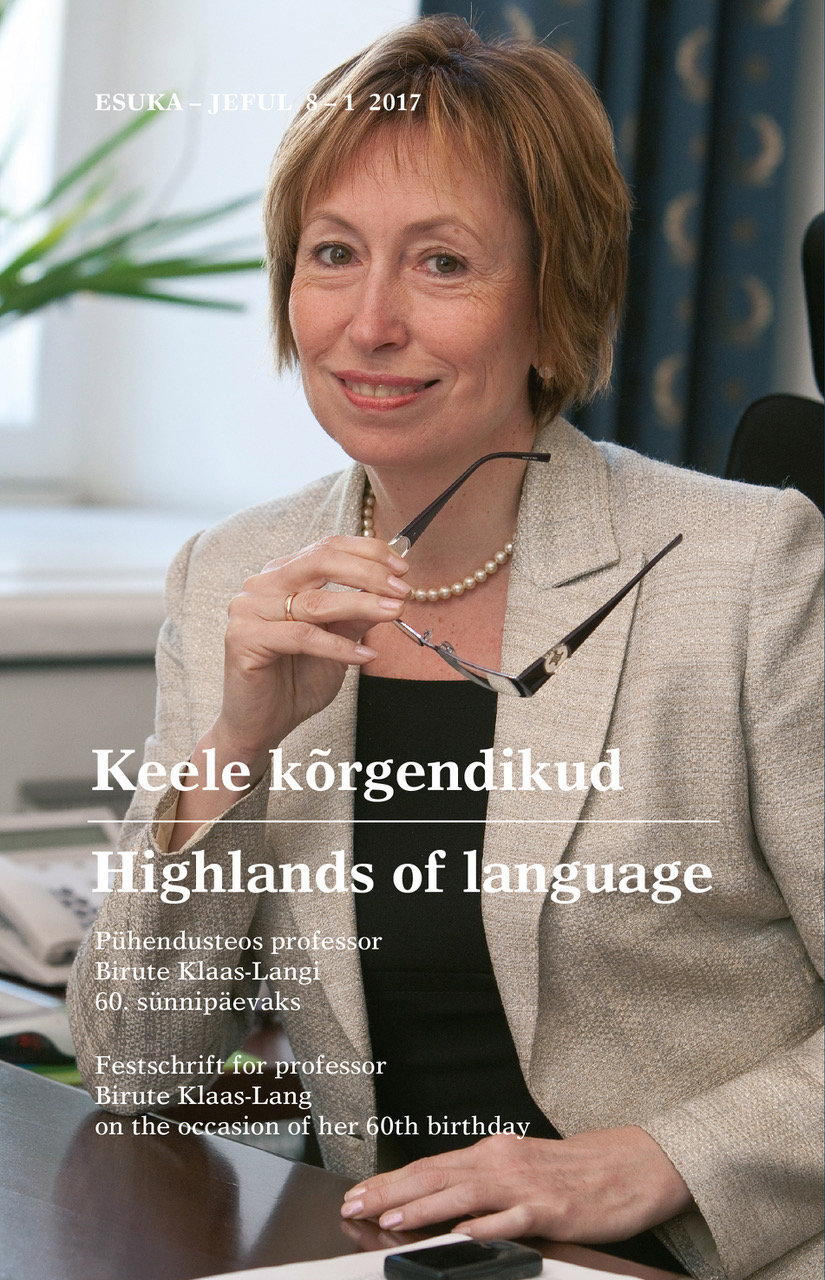The construction non-prefixed verb + spatial adverb in Latvian
DOI:
https://doi.org/10.12697/jeful.2017.8.1.05Keywords:
aspect, telicity, verb of motion, non-prefixed / prefixed verb, spatial adverbAbstract
The status of constructions of the type non-prefixed verb + adverb with regard to expressing aspectuality (iet iekšā ‘to go in’, vērt vaļā ‘to open up’ etc.) is one of the most interesting problems in Latvian aspectology. However, too little attention has been paid in Latvian linguistics to the use of such constructions in sentences, as well as to the lexical (spatial) meanings of adverbs and their syntactic functions. This study aims to fill that gap, taking a closer look at the ways in which constructions of the type non-prefixed verb + adverb are used in sentences, as well as at the semantics of adverbs and their role in expressing verbal aspect.
Whether a verb tends to bind with an adverbial modifier of place (a spatial adverb) when used in actual sentences is determined by verb semantics, resp. telicity, and does not have any direct bearing on the imperfective vs. perfective aspect of the verb or vice versa. Besides, adverbs are non-obligatory. The main conclusion of this study then is that the concept ‘construction of the type non-prefixed verb + adverb’ should be used with extreme caution with regard to verb–adverb bindings in sentences. It can, perhaps, be applied, in a very broad sense, to verbs of motion (and other telic verbs), but not to the use of all Latvian verbs in general.
Kokkuvõte. Andra Kalnača: Konstruktsioon prefiksita verb + kohamäärsõna läti keeles. Üks läti keele aspektoloogia huvitavamaid küsimusi on konstruktsioonide prefiksita verb + adverb staatus aspekti väljendamisel (nt iet iekšā ‘sisse minema’, celt pāri ‘üle tõstma’). Siiski pole läti keeleteaduses pööratud piisavalt tähelepanu selle konstruktsiooni kasutamisele lauses ega adverbi leksikaalsele, s.o lokaalsele tähendusele ja süntaktilistele funktsioonidele. Tähtis on rõhutada, et lokaalse tähendusega adverbi lausesse liitmise tingib verbi semantika, s.o teelisus. Verbi imperfektiivsusel/perfektiivsusel pole sellega otsest seost, vrd skriet prom – aizskriet prom ‘minema jooksma’. Sealjuures pole adverbi kasutamine koos verbiga kohustuslik; samuti võib adverb liituda prefiksiga verbile. Sellepärast tuleb mõistet “konstruktsioon prefiksita verb + kohamäärsõna” kasutada väga ettevaatlikult, kui juttu on verbi ja adverbi liitumisest lauses. Üldjoontes võib seda mõistet kasutada liikumis verbide (ja teiste teeliste verbide) kohta, aga mitte kõigi läti keele verbide kohta, sest läti keele verbide ja adverbide kasutamine lauses ei ole grammatiseerunud ei konstruktsioonide ega eraldiseisvate vormidena.
Märksõnad: verbi aspekt; teelisus; adverb; liikumisverb; prefiksita/prefiksiga verb


